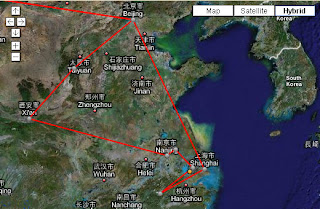Your next culture shock may come from the sheer scale of everything. After New York, Tokyo or London, Chinese cities will not seem that much more crowded or busy, but the actual grandeur starts dawning on you as you start travelling across the country from one city to another, each the size of a midrange European nation. And then you remember that it is still a mostly agricultural nation, so the majority lives in the countryside. As the never-ending fields, rice-paddies and villages unfold in front of you as your train chugs along, the realization of just how much grander this all is compared to anything you are used to, will give you a chill down the spine. It did to me.
It has been my belief that the country of China roughly corresponds to the continent of Europe in terms of climatic, ethnic and cultural variety. What we perceive as one nation is, in fact, a unified block of many, somewhat along the lines of what the European Union is striving to achieve and the Soviet Union finally failed in.
Just like Europe, the Chinese subcontinent - we can rightly call it so - has also experienced massive foreign invasions, times of unity and times of great division, flourishing and decline of religions. The point of cohesion, among others, for China's many peoples is the script - the regional dialects are very often mutually unintelligible, unless when written in Chinese characters. In Europe, with all its genetic and cultural diversity, Christianity is the hinge.
- Beijing - Grandeur, Rusticity & Russiatown
- Great Wall In Autumn Hues
- Pingyao - A Feel Of The Days Long Gone By
- Xi'an - Terracotta Army, Hot Springs & Mosques
- Nanjing - The Swanky Capital Of South
- Yangzhou - The Treasure Box Garden
- Suzhou - The Silk Capital Of China
- Tongli - The Water Village
- Tunxi - Breezy Gateway to Huangshan
- Huangshan - Mountain Range From A Classical Chinese Poem
- Hongcun - Water Buffalo Shaped Village
- Shanghai - Carnival Of Life





























